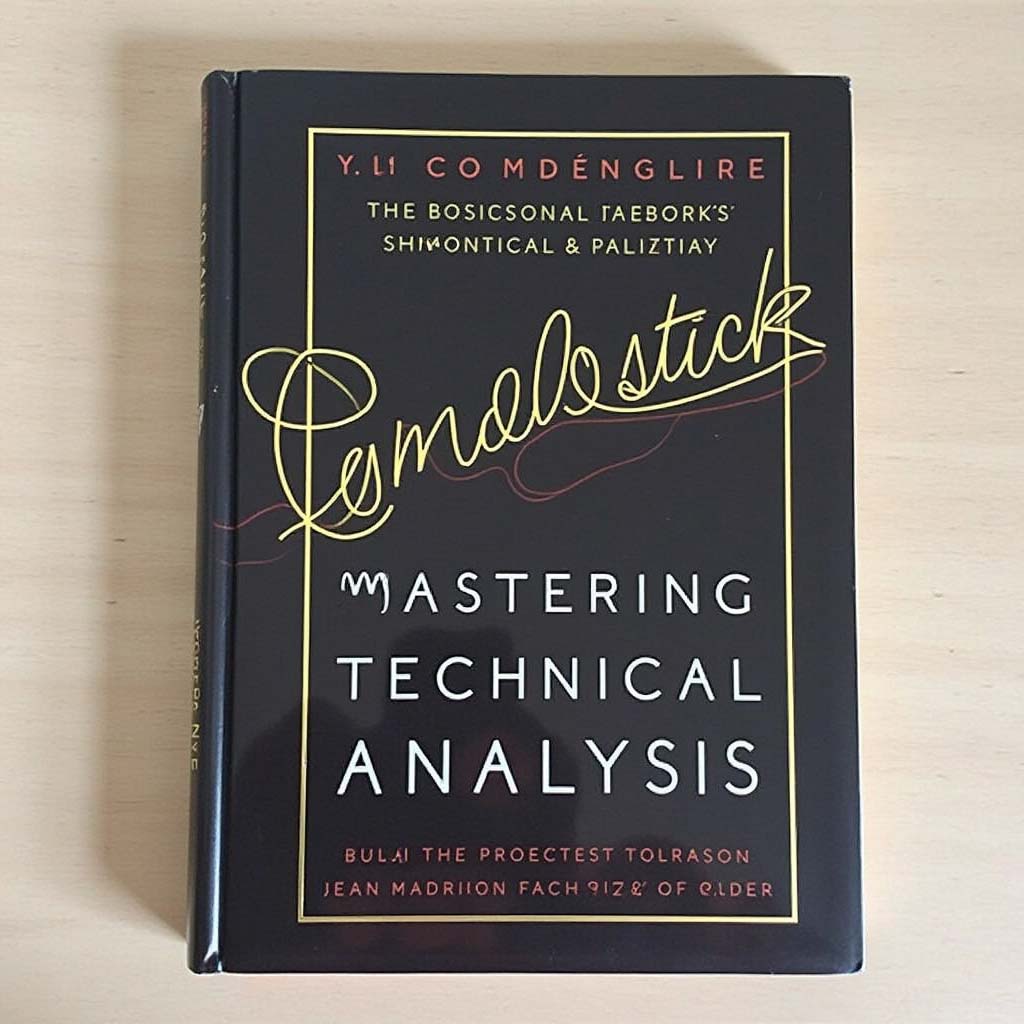
Candlestick charting is an essential tool for traders looking to analyze price movements with greater clarity. These visual representations of market sentiment provide valuable insights into potential reversals, trends, and momentum shifts. Understanding candlestick patterns can significantly enhance decision-making in both short-term and long-term trading strategies.
For those eager to refine their technical analysis skills, selecting the right educational resources is crucial. The following books offer in-depth knowledge, practical applications, and expert guidance on candlestick trading.

Top Candlestick Books for Traders
The right candlestick book can bridge the gap between theory and execution, helping traders interpret market signals effectively. Whether you are a beginner or an advanced trader, choosing a book that aligns with your skill level ensures a productive learning experience.
How Candlestick Books Improve Trading Skills
Reading well-structured candlestick books can help traders:
- Identify bullish and bearish candlestick patterns to anticipate price movements.
- Combine candlestick analysis with other technical indicators for stronger trade confirmations.
- Develop risk management strategies based on pattern reliability.
- Improve entry and exit timing by recognizing high-probability setups.
Market data suggests that traders who integrate candlestick analysis into their strategies experience improved trade execution and better risk-reward ratios.
Choosing the Right Candlestick Book for Your Experience Level
Before selecting a book, consider:
- Beginner traders: Look for books with clear explanations, visual examples, and step-by-step pattern breakdowns.
- Intermediate traders: Books that integrate candlestick analysis with support/resistance, volume, and momentum indicators can enhance strategy building.
- Advanced traders: Resources that explore advanced candlestick techniques, backtesting methods, and multi-timeframe analysis are ideal.
By selecting a book that aligns with your current expertise, you can gradually refine your trading approach and improve market performance.

Japanese Candlestick Charting Techniques by Steve Nison
Steve Nison’s Japanese Candlestick Charting Techniques is widely regarded as the definitive resource on candlestick analysis. As the first to introduce Japanese candlestick charting to the Western trading community, Nison’s work remains highly relevant for traders looking to master pattern recognition and integration with broader technical strategies.
Key Candlestick Patterns Covered in This Book
This book details over 50 candlestick patterns, including:
- Doji – Indicates market indecision, often signaling potential reversals.
- Engulfing Patterns – Highlights strong bullish or bearish momentum shifts.
- Hammer and Hanging Man – Used for identifying key support and resistance zones.
- Morning and Evening Star – Reliable reversal patterns in trend analysis.
Each pattern is accompanied by real-market examples, making it easier for traders to recognize them in live trading environments.
How This Book Combines Western and Japanese Analysis
Unlike many candlestick books that focus solely on patterns, Nison’s work bridges the gap between Japanese candlestick techniques and Western technical analysis by integrating:
- Trendlines and moving averages for confirmation.
- Oscillators like RSI and MACD to filter high-probability setups.
- Fibonacci retracements to improve risk-reward ratios.
This approach makes the book valuable for traders who want to enhance their existing technical strategies with candlestick insights.
Why Steve Nison’s Work Is Essential for Traders
Nison’s expertise in candlestick trading has influenced institutional and retail traders worldwide. His famous quote, “Candlesticks breathe life into technical analysis charts,” captures the significance of these patterns in market forecasting.
This book is ideal for traders who:
- Want a structured approach to learning candlestick analysis.
- Need a reliable reference guide for pattern recognition.
- Seek to integrate candlestick signals into broader trading strategies.
For those serious about improving their chart-reading skills, Japanese Candlestick Charting Techniques remains a cornerstone resource.

The Candlestick Course by Steve Nison
Steve Nison’s The Candlestick Course serves as a structured, hands-on guide for traders eager to apply candlestick patterns in real-market conditions. Unlike his more theoretical work, this book takes an interactive approach, offering exercises and self-assessments to reinforce key concepts. It is particularly valuable for traders looking for a step-by-step framework to solidify their understanding of candlestick analysis.
Interactive Learning Approach with Quizzes and Exercises
A distinguishing feature of this book is its lesson-based format, which includes:
- Step-by-step breakdowns of essential candlestick formations.
- Practice quizzes that test pattern recognition skills.
- Real-world case studies demonstrating the effectiveness of various setups.
- Homework assignments designed to help traders reinforce learning.
This structured approach makes the book accessible to beginners while also serving as a refresher for more experienced traders who want to sharpen their pattern recognition skills.
How This Book Builds on Japanese Candlestick Charting Techniques
While Japanese Candlestick Charting Techniques focuses on introducing the method, The Candlestick Course takes it further by guiding traders on practical application. Key elements include:
- Pattern reliability rankings, helping traders distinguish between high-probability and weaker formations.
- Filtering false signals by combining candlestick patterns with other indicators.
- Recognizing context—understanding that candlestick signals are most effective when interpreted alongside trend and volume analysis.
By reinforcing these principles with interactive content, this book enhances traders’ ability to apply candlestick knowledge in real-time trading environments.
Practical Trading Applications for Candlestick Patterns
Applying candlestick analysis correctly can improve trade execution and risk management. Nison’s book explains how to use candlestick formations in:
- Day trading, where short-term reversals and continuation patterns can refine entry points.
- Swing trading, where traders look for trend reversals supported by candlestick confirmation signals.
- Risk management, by recognizing warning signs such as bearish engulfing patterns near resistance levels.
By the end of this book, traders will have a practical framework for incorporating candlestick signals into various market conditions.

Getting Started in Technical Analysis by Jack Schwager
Jack Schwager’s Getting Started in Technical Analysis provides a comprehensive introduction to chart reading, making it an excellent starting point for traders. While it covers a broad range of technical tools, it also explores candlestick patterns within a wider analytical framework. This book is particularly beneficial for those looking to integrate candlestick formations with trend analysis, indicators, and risk management techniques.
Candlestick Patterns in the Broader Context of Technical Analysis
Unlike books dedicated solely to candlestick charts, Schwager presents them as part of a larger technical strategy. Readers will learn:
- How candlestick signals fit into support and resistance analysis.
- The role of trendlines and moving averages in confirming candlestick signals.
- How to integrate momentum indicators like RSI and MACD for additional trade validation.
By understanding how candlestick patterns interact with other technical tools, traders can make more informed decisions rather than relying solely on single candlestick formations.
How This Book Helps Beginners Understand Market Trends
Many beginners struggle with distinguishing between short-term noise and meaningful trend signals. Schwager simplifies this by:
- Breaking down trend structures and how candlesticks confirm trend strength.
- Explaining market psychology behind candlestick formations.
- Offering real-market examples that illustrate how trends develop and reverse.
This structured approach ensures that traders develop a well-rounded perspective on technical analysis rather than focusing on candlestick patterns in isolation.
Key Technical Indicators Explained Alongside Candlestick Analysis
For traders who want to enhance their candlestick strategies, Schwager introduces key technical indicators such as:
- Moving Averages – Smoothing price action to confirm trend direction.
- Relative Strength Index (RSI) – Identifying overbought and oversold conditions.
- Bollinger Bands – Recognizing price volatility and potential breakout zones.
- Volume Analysis – Confirming the strength behind candlestick patterns.
By integrating these indicators with candlestick analysis, traders can improve their ability to filter false signals and execute trades with greater confidence.
Schwager’s book serves as a solid foundation for anyone looking to incorporate candlestick analysis into a broader technical trading strategy.

Practical Steps After Reading Candlestick Books
Understanding candlestick patterns is only the first step. To translate this knowledge into profitable trading, traders must apply these concepts in real-market conditions, refine their strategies, and develop a structured approach to risk management.
How to Apply Candlestick Knowledge in Live Markets
Transitioning from theory to practical application requires a methodical approach. Here are some key steps to implement candlestick analysis effectively:
- Start with Paper Trading – Before risking real capital, practice identifying candlestick patterns using a demo account or trading simulator.
- Analyze Historical Charts – Review past market data to see how candlestick formations played out in various market conditions.
- Combine with Other Indicators – Strengthen candlestick signals by using trend indicators, volume analysis, and momentum oscillators.
- Identify High-Probability Setups – Focus on candlestick patterns that align with broader technical structures such as support and resistance levels.
- Track and Evaluate Trades – Maintain a trading journal to assess the effectiveness of different candlestick patterns over time.
Applying these techniques consistently can help traders develop confidence in executing trades based on candlestick analysis.
Best Resources for Practicing Candlestick Trading Strategies
To reinforce learning and improve real-world execution, traders should leverage multiple resources, including:
- Charting Platforms – Use platforms like TradingView, MetaTrader, or ThinkorSwim to analyze candlestick patterns on live charts.
- Market Screeners – Tools like Finviz and StockCharts allow traders to filter stocks and forex pairs based on candlestick formations.
- Backtesting Software – Utilize platforms like NinjaTrader or Amibroker to test candlestick strategies on historical data.
- Trading Communities – Engage with professional traders in online forums and social media groups to discuss candlestick setups and trade ideas.
Using these resources can help traders refine their candlestick pattern recognition and improve trade execution.
Building a Trading Plan Using Candlestick Patterns
A well-defined trading plan ensures consistency and minimizes emotional decision-making. When integrating candlestick analysis, consider these key components:
| Component | Details |
| Entry Criteria | Define which candlestick patterns signal trade opportunities and how they align with trend confirmation tools. |
| Stop-Loss Strategy | Establish predefined exit points to limit risk, such as setting stop losses below recent support levels. |
| Position Sizing | Determine trade size based on risk tolerance and capital allocation. |
| Exit Strategy | Decide whether to use trailing stops, profit targets, or reversal signals for exiting trades. |
| Review Process | Regularly assess the effectiveness of candlestick-based trades and make adjustments as needed. |
By structuring a trading plan around candlestick patterns, traders can improve discipline and consistency in their decision-making process.
Frequently Asked Questions
What Is the Best Candlestick Book for Beginners?
For those new to candlestick trading, The Candlestick Course by Steve Nison is an excellent starting point. It provides a structured, interactive approach with quizzes and exercises to reinforce learning. The book simplifies complex patterns, making it accessible for beginners.
Which Candlestick Book Covers the Most Patterns?
Japanese Candlestick Charting Techniques by Steve Nison is widely regarded as the most comprehensive book on candlestick patterns. It details over 50 formations, their historical significance, and how they can be integrated with Western technical analysis for higher accuracy.
Can You Learn to Trade Solely from Candlestick Books?
While candlestick books provide a solid foundation, successful trading requires practical experience, risk management skills, and an understanding of market psychology. Traders should supplement their knowledge with live trading practice, technical indicator analysis, and continuous learning from real-market conditions.
